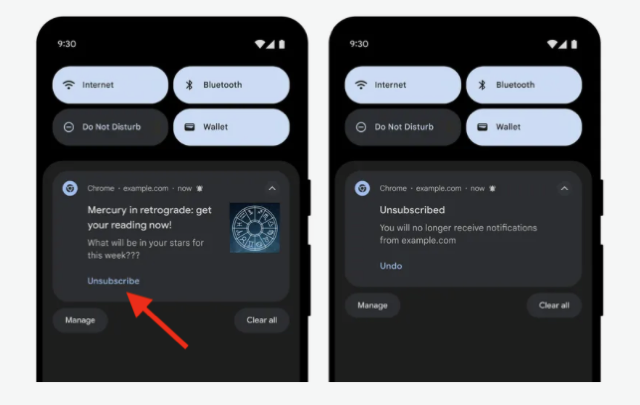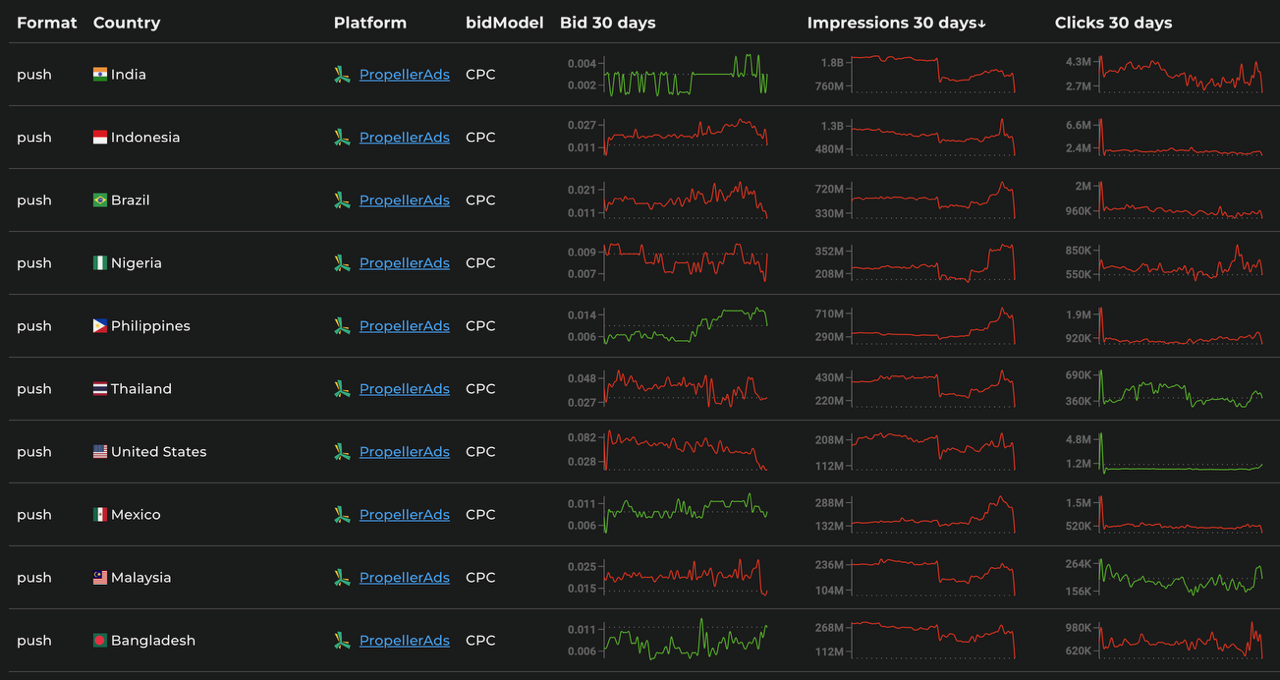Is this the end of push collection and push traffic?
Is this the end of push collection and push traffic?
Many Traffic Company partners rely heavily on push notification traffic. Some partners buy push traffic to drive users toward our offers, others use push collection scripts on their sites to gather subscriptions, and quite a few do both. With recent changes in the push notification world, we want to keep our partners in the loop about how this may impact your work with Traffic Company.

What’s Changing in Google Chrome’s Push Notification Management?
Google Chrome’s latest update has made managing website notifications easier and more security-focused. Now, users can unsubscribe from notifications with just one click—no more hunting through browser settings to opt out. This streamlined unsubscribe process boosts user experience, but there’s a catch: it can impact the lifetime value (LTV) of users.
Why? Because with the ease of opting out, fewer users will stick around long-term. For Traffic Company partners who use push collection scripts on their sites, this new setup will affect recurring revenue from push notifications. With users leaving the push list sooner, some partners may want to rethink the profitability of push-based strategies.
Google Safe Browsing (GSB) Updates: Added Security and Potential Drawbacks
Chrome’s updates also include a new background Safety Check tool that keeps users safe by removing permissions for websites they no longer visit, flagging unwanted notifications, and sending alerts if any security actions are taken. Safety Check also protects users from misleading notifications. If Google Safe Browsing detects that a site tricks users into allowing notifications, Safety Check will automatically remove these permissions.
This feature is great for users but can create challenges for some Traffic Company partners. Google Safe Browsing might label domains linked to unwanted notifications, which could result in domain bans or blocks from ad networks. These consequences can be significant, affecting ad strategies and user engagement for any business relying on push notification traffic.
A Glimmer of Hope: In-Page Push Notifications
Luckily, there’s an alternative! In-page push notifications could be a workaround for Traffic Company partners feeling the effects of the push notification changes. These notifications differ from browser-based ones and are controlled directly by the website. Here’s how they work:
- Website-Controlled: In-page push notifications are created and managed by the website’s own code. They appear as banners, pop-ups, or side messages within the webpage itself, keeping users engaged while they’re on your site.
- Browser-Free: Unlike traditional push notifications, in-page notifications don’t need explicit permission from users. Since they’re embedded within the site’s content, they don’t interact with the browser’s notification system, reducing dependency on browser-based settings.
Here’s the difference:
- Browser Push Notifications: Sent through the browser, requiring explicit user consent. They can appear even when the user isn’t on the site, often showing up in the operating system’s notification center.
- In-Page Notifications: Only appear while users are actively browsing your site, managed directly by your site’s code. They disappear once users leave, bypassing browser permissions entirely.
See below how quickly available push traffic decreases with some ad networks:


Key Takeaways for Traffic Company Partners
With these updates, it’s crucial to review your push notification strategy. The latest Chrome update makes it easy for users to manage notifications, but it could reduce long-term subscriptions and recurring revenue from push traffic. In-page push notifications, however, are a flexible alternative for Traffic Company partners, allowing you to keep users engaged without relying on browser permissions.
By understanding these changes, you can adapt your strategies to the shifting push notification landscape, optimizing engagement and staying compliant with security standards.



